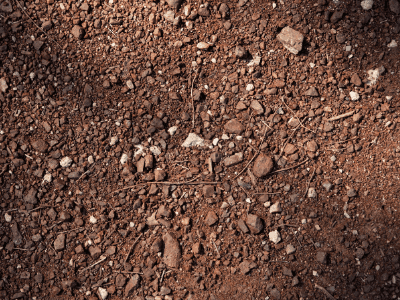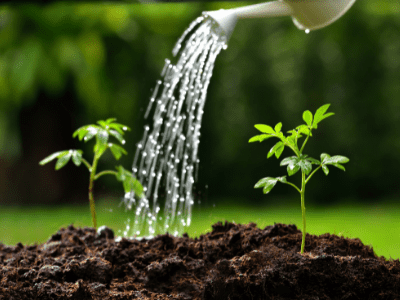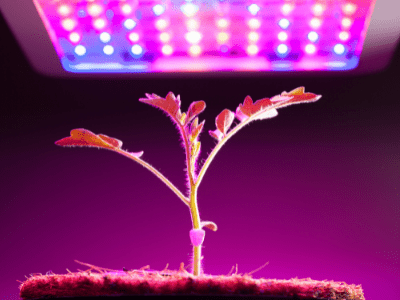
This perennial succulent is known as Sansevieria Aubrytiana. This snake plant is commonly referred to as Father-in-law’s tongue. Leaves with a marbling effect can be identified as the characteristics of this variety. Mother-in-law’s tongue is characterized by wider leaves than a typical plant. Growing this stemless plant is easy and hardy.
This is Grace’s experience with Sansevieria Aubrytiana.
I love decorating my house, garden, and patio with plants.
But I don’t really have that many times and energy to care for the plants that require a huge effort.
Then I started trying my luck with Sansevieria variations.
It worked out great for me! When I did research it wasn’t like I’m going down the rabbit hole.
Everything was the perfect fit for my energy and schedule.
I’d definitely buy more of these sansevieria, especially Sansevieria Aubrytiana, my Mom’s favorite!
The truth is,
There are many similarities between Sansevieria Kirkii and Sansevieria Aubrytiana. Both of these plants have very similar leaf patterns. Sansevieria Aubrytiana, however, has leaves that are more upright and smoother.
Sansevieria Aubrytiana belongs to the genus Dracaena, in the family Asparagaceae.
Also known as:
- Father In Law’s Tongue
- Acyntha Bracteata (Baker) Kuntze
- Sansevieria Bracteata Baker
Sansevieria Aubrytiana Features
Origin
The plant Sansevieria Aubrytiana is a native of tropical Africa, just like most Sansevieria species.
Leaves
The leaves of Sansevieria Aubrytiana are flat, fibrous, and sword-shaped. Generally, they are dark green or grey-green with white specks along the length. The base of the leaf is slightly channelled despite its smooth and flat overall surface.
The Size
Depending on the atmospheric conditions, this species can grow up to 2 feet tall. An ideal environment would allow the plant to grow up to 3 feet tall. Nearly four inches wide, the leaves of this plant are almost 3 inches long. Two to two and a half feet is the maximum height of a flower stalk. It typically takes one inch for the flower to bloom.
Flower
Rarely, the plant produces a long, vertical flower stalk covered in bunches of buds. There is usually one flower stalk, but there can be more. Greenish cream-white flowers bloom in the spring. It is possible for these flowers to possess a light scent.
Toxicity
Humans and pets can both be poisoned by all parts of the plant. The plant can cause swelling in the tongue and throat when chewed. It can cause gastrointestinal problems like vomiting, diarrhea, drooling, etc. if consumed in large quantities.
Pests
Plants of this type are generally resistant to diseases and pests. It is possible, however, that your house could be infested with mealybugs, vine weevils, or spider mites. Insects can be easily controlled when they are caught early. In addition to causing root rot as well as fungus and disease, overwatering is an unnecessary problem.
If the pests are truly bothering you, we recommend you to prepare some of these pest repellents ready for all time.
Mighty Mint Gallon (128 oz) Insect and Pest Control Peppermint Oil
Prices pulled from the Amazon Product Advertising API on:
Product prices and availability are accurate as of the date/time indicated and are subject to change. Any price and availability information displayed on [relevant Amazon Site(s), as applicable] at the time of purchase will apply to the purchase of this product.
Wondercide EcoTreat Ready-to-Use Outdoor Pest Control Spray
Prices pulled from the Amazon Product Advertising API on:
Product prices and availability are accurate as of the date/time indicated and are subject to change. Any price and availability information displayed on [relevant Amazon Site(s), as applicable] at the time of purchase will apply to the purchase of this product.
Propagation
There are several ways to propagate this plant, including root division, leaf cuttings, and rhizomes. This method is quick and reliable for dividing the root ball. A healthy leaf section may be more advantageous when you have a smaller plant. Plant leaf cuttings bottom-side-down when using leaf cuttings. Take three to four-inch sections. The roots will begin to form after a few months.
Season Of Growth
During the spring and summer seasons, this evergreen plant actively grows. Summer and autumn are the best times for flowers to bloom.
Growing Conditions
Soil

Soil that drains quickly is ideal for Sansevieria plants. Enhance the drainage capacity of the soil with ingredients like perlite, coir, pumice, or gravel. Snake plants should never be grown in dense, sticky soil. If you don’t have time to mix your own soil mix, you can use a regular potting mix for succulents and cacti.
Watering

When Sansevieria Aubrytiana is potted in a 5″ pot and does not receive direct sunshine, it requires 0.5 cups of water every 12 hours.
Use our water calculator to tailor watering recommendations to your specific environment, or download Greg for more in-depth advice on all of your plants.
Is it possible for your plant to obtain direct sunlight?
Watering this drought-resistant plant is not necessary frequently. During the growing season, spring to summer, you can water it every 1-2 weeks. As the temperature drops, reduce the frequency of watering. During winters, water no more than once every month. Before you water the plants, make sure that the soil is dry one to 1.5 inches below the surface. Drain the water deeply and let it drain freely.
Lighting

Sansevieria Aubrytiana can survive being 6 feet or less from a window and light source.
To guarantee it receives enough light to survive, place it fewer than 6 feet from a south-facing window.
To learn how the present weather in your location influences the placement of Sansevieria Aubrytiana in your home, select your region.
The species can tolerate conditions ranging from full sun to low light. An ideal situation would be indirect and bright sunlight. It is best to keep indoor plants in a well-lit room, either by using sunlight or artificial lighting. To protect outdoor plants from the harsh afternoon sun, place them in a shady area.
If you’re in need to buy a grow light, these are our favourites.
BLOOMSPECT Upgraded 1000W LED Grow Lights
Prices pulled from the Amazon Product Advertising API on:
Product prices and availability are accurate as of the date/time indicated and are subject to change. Any price and availability information displayed on [relevant Amazon Site(s), as applicable] at the time of purchase will apply to the purchase of this product.
DOMMIA Grow Light for Hydroponics, Succulents and More
Prices pulled from the Amazon Product Advertising API on:
Product prices and availability are accurate as of the date/time indicated and are subject to change. Any price and availability information displayed on [relevant Amazon Site(s), as applicable] at the time of purchase will apply to the purchase of this product.
Environment
Temperatures and humidity in average rooms are suitable for Sansevieria plants. They prefer temperatures between 60 and 85°F (15 and 29°C). When the soil is wet, it’s best to avoid temperatures below 50°F (10°C). Leaf damage can result from frost, and the scarring is permanent.
Fertilizer

The majority of potting soils contain enough nutrients for plants to produce new growth.
Your plant will have grown large enough to require a larger pot by the time it has drained the nutrients in its soil.
Repot your Sansevieria Aubrytiana once it doubles in size or once a year, whichever comes first, to replace its nutrients.
Sansevieria Aubrytiana prefers dry soil and should only be irrigated when necessary. Use our water calculator to tailor watering recommendations to your specific environment, or download Greg for more in-depth advice on all of your plants.
Sansevieria Aubrytiana may survive without a window or a light source. To guarantee it receives enough light to survive, place it fewer than 6 feet from a south-facing window. To discover how the current weather in your location influences the placement in your home, select your region.
Greg doesn’t have any confirmed info on the toxicity of this plant. It’s always better to consult a medical expert if you, a family member, or a pet ingest plant material with unknown toxicity.
Call Poison Control at (800) 222-1222 if you or someone else has eaten this plant. If your pet ate this plant, call your veterinarian or the American Society for the Prevention of Cruelty to Animals (ASPCA) at (888) 426-4435.
Sansevieria Aubrytiana thrives in arid climates. Increasing humidity or spraying your plant encourages water to remain on the leaves, creating the ideal setting for deadly fungal.
Well-draining soil is ideal for Sansevieria Aubrytiana. Healthy soil will have plenty of organic materials like coco coir, as well as perlite or vermiculite for drainage. A handful of perlite mixed into standard store-bought potting soil should suffice.
Sansevieria Aubrytiana is a slow-growing plant that doesn’t require fertilizer. Replacing your plant’s potting soil once a year should be enough to keep them healthy. It’s important to remember that plants obtain their energy from sunlight, not fertilizer.
Sansevieria Aubrytiana often goes dormant in the winter, and you may notice a slowing of their growth. During this period, waterings should be spaced out considerably.
Care Tips
This plant thrives in moderate humidity.
Clean all leaves with a dry towel to prevent dust from affecting light absorption. Avoid getting the leaves wet when watering them.
During the growing season, you can feed your plant with a balanced fertilizer once a month. This isn’t necessary, though, because it’s low-maintenance and slow-growing.
According to NASA research, this plant can eliminate pollutants such as benzene and formaldehyde from the air in enclosed places.
Sum Up
The bottom line is,
When you’re starting to care for a new type of plant that you just found out…
…it can be a hindrance especially when you’re a newbie in gardening.
Sansevieria Aubrytiana however, isn’t a bad place to start.
With this plant, you can learn by doing.
You don’t have to spend that much time learning about it too.
Conclusion
So how was it?
If this is your first time taking care of Sansevieria Aubrytiana, we’ve got your back.
Share your mind with us in the comment below.
We’d love to connect with you!
Frequently Asked Questions Around Sansevieria Aubrytiana: The Amazing Plant That Can Help You Heal From Anything
Did you know that sansevieria aubrytiana is a plant…
…that can help heal from anything? Well, now you do!
This interesting plant is native to parts of Africa and Southwest Asia…
…and it’s used as a traditional remedy for a variety of health problems.
In this article, we’ll take a look at sansevieria aubrytiana facts…
…including its benefits, how to care for it, and some of…
…the ways in which it can help you heal.
So read on to learn more about this amazing plant!
What are the benefits of using Sansevieria Aubrytiana products?
Sansevieria Aubrytiana is a plant that has been used in traditional Chinese…
…and Ayurvedic medicine for centuries.
The plant is believed to have a variety of benefits…
…including reducing inflammation and supporting healthy blood pressure levels.
How can I use Sansevieria Aubrytiana to heal from injuries?
Sansevieria Aubrytiana can help heal from injuries by acting…
…as a detoxifier and helping to remove toxins from the body.
The plant can also help to promote wound healing and protect the skin against infection.
What are some other uses for Sansevieria Aubrytiana?
The Sansevieria Aubrytiana plant can be used to treat a variety of illnesses…
…and conditions such as snakebite, burns, snake bite fever, snake bite prevention…
…snakebite symptoms, snakebite treatment, snake bite anti-venom…
…and snakebite vaccine preparation.
The plant is also a good source of nectar which can be used to make honey.




